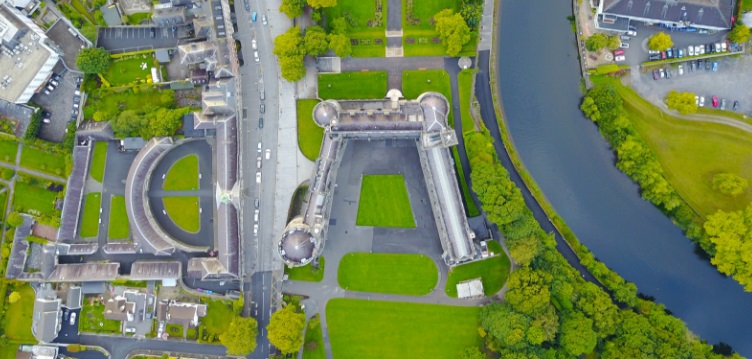
The National Mapping Agreement (NMA) is an initiatve which allows Government departments and Public Sector bodies to avail of access to almost all of the state's authoritative geospatial data. Since it's launch in January 2017, the National Mapping Agreement has helped to facilitate the integration and sharing of Government information whilst protecting the rights of the citizen.
The Role of Geospatial Information at Policy Level
Public sector bodies are strongly encouraged to make greater use of Geospatial Information (GI) for the effective delivery of public services. The Irish government’s Public Service Reform Plan advocates the value of using GI to improve public service delivery.
The National Geospatial Strategy outlines measures to optimise Ireland’s geospatial infrastructure for government planning and decision making, part of which includes the provision of an authoritative, standardised, maintained core geospatial reference dataset.
The NMA also aligns with The EU Digital Agenda, which aims to develop a digital single market across Europe, and the Irish government’s Public Service ICT Strategy, which encourages the use of ICT (Information and Communications Technology) for delivering public services in a more efficient, shared and integrated manner.
The Importance of Geospatial Information
GI is used not only for mapping, but for data analytics, scenario modelling and decision making. GI can be integrated with other datasets and enable information to be interpreted visually. GI has enormous value to decision makers, for example, it improves navigation and route planning, which reduces journey times, emissions and fuel costs. GI also allows public services to be targeted according to location, population profiles and other variables. In a nutshell, GI is a powerful asset for policy makers and decision makers.
The Economic Value of Geospatial Data
Geospatial data contributes almost €70 million in terms of gross added value to the Irish economy every year. An assessment of the economic value of the geospatial industry in Ireland in 2014, by Indecon, a leading independent economic research organisation, revealed that the geospatial industry:
- Has an economy-wide impact of €126.4 million
- Directly employs 1677 people
- Supports the employment of a further 3,087 people
- Spends €84.4 million on wages and salaries
- Generates sales or output valued at €177.5 million
- Contributes over €69.2 million in terms of gross added value to the economy
- Saves the public sector €82 million annually due to the use of geospatial information
- Generates a time saving to the value of €279 million annually due to the use of geospatial information
- Generates competition benefits of €104 million

Benefits of the National Mapping Agreement
The NMA gives public sector bodies the same access to a consistent set of core datasets from the Surveying function of Tailte Éireann. The benefits of this are as follows:
- More available data: The user has free access to a greater range and volume of data.
- A common spatial reference framework: All users are accessing data from a common spatial reference framework, which makes it easier for organisations to work jointly with one another.
- More efficient public services: Geospatial data makes planning, targeting and delivering public services more efficient.
- Encourages innovation: Making geospatial data available to a wider audience encourages new, innovative applications of the data and further enhances the data’s economic value.
- Greater accuracy: A more consistent and systematic approach means that geospatial data is no longer duplicated, inconsistent, incompatible and unconnected across, or within, public bodies.
- Enhanced analysis and decision-making: Geographical Information Systems (GIS) applications can be used to interact with the data, to display and connect different variables, to identify patterns and trends, and to model ‘what-if’ scenarios. This encourages more informed decision-making.
- Money and time savings: Public sector bodies and Government Departments save time and money because less administration is required.
Who’s eligible to access Geospatial data under the NMA?
The following bodies can apply for access to data:
- Government departments
- Local authorities
- Enterprise boards
- Non-commercial semi-state bodies
- Health Service Executive
- Emergency services
- Third Level higher education (for teaching, research and non-commercial activities)
- Schools (via the ScoilNet Maps initiative)
- Other public bodies (may be eligible via a joint agreement between Government and Tailte Éireann)
Gain access to data through the NMA
If you are an existing customer:
Public sector bodies who currently use the data can continue to access the data as they do at present. To access additional datasets or to become aware of new datasets that have been made available, please contact your account manager.
If you wish to access data for the first time:
Public sector bodies who wish to access the data for the first time can apply for access by emailing us here. After you submit your enquiry a member of the team will contact you to further your application.
